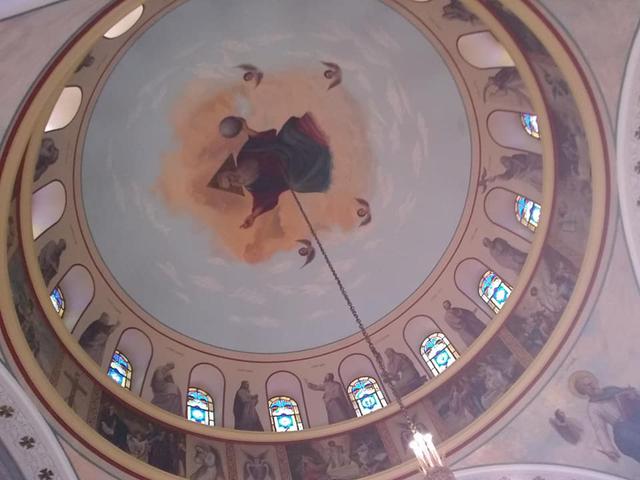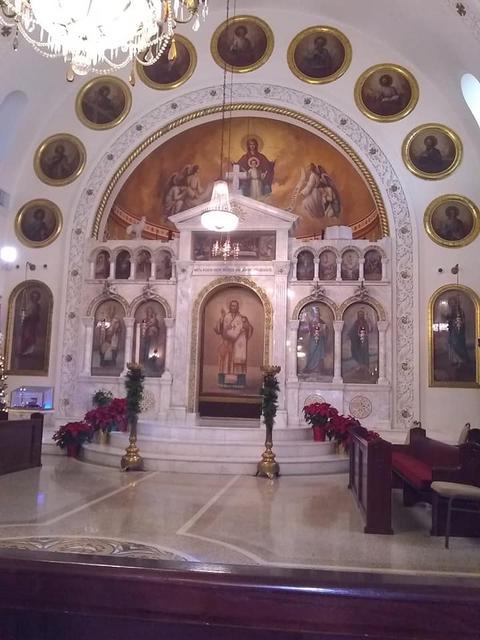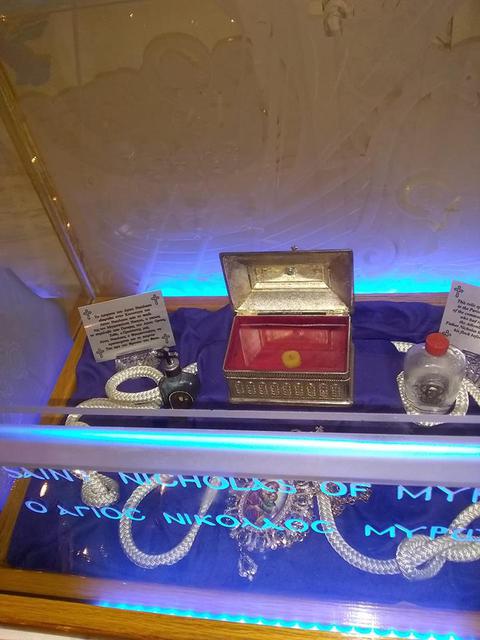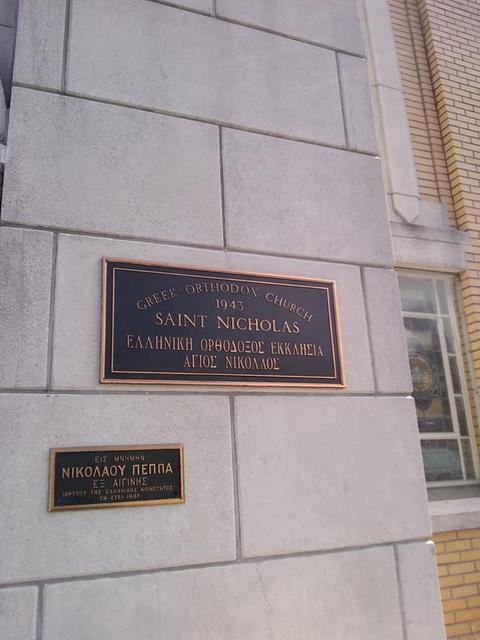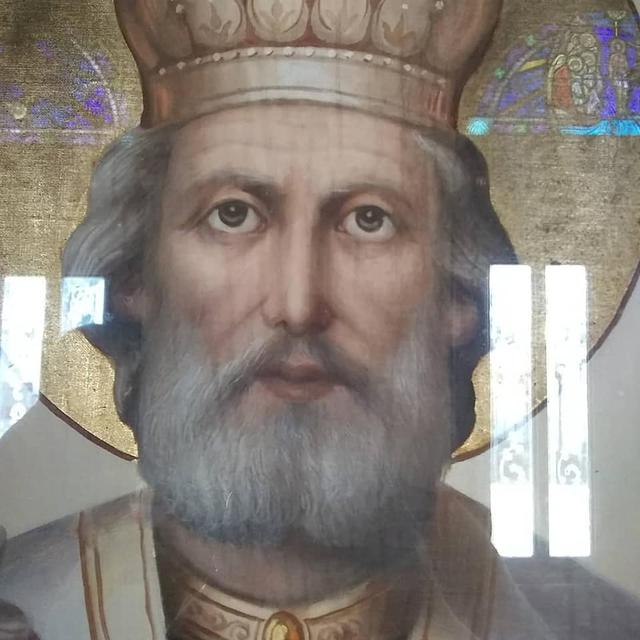December 12, 2018 – Tarpon Springs
Weeping Icons
published in Bayside News, April 15th ed.
Home
Tarpon Springs is an unusual place with an unusual history. Greek emigrants from the Dodecanses Islands populated it, utilizing their knowledge of diving to create a thriving sponge diving industry. As commerce grew, so did the Greek population. Greek culture, traditions and religion rose to prominence in the area. Yet, in addition to this, one other new element was introduced to Tarpon Springs: the weeping icons.
Icons are pictures of holy people and are venerated as sacred in the Greek Orthodox Church. Often, they depict Jesus, Mary, or special saints. Some icons, for reasons unexplained, shed tears that create mixed reactions from the public. Often, the tears were thought to be warnings of doom. Weeping icons have a history of accurately predicting earthquakes and war in Greece. Others believe it is an uplifting experience that reveals the divine’s interaction with mankind.
The story of the Tarpon Springs icons begins at St. Nicholas Greek Orthodox Cathedral. On Dec. 5, 1970, a woman cleaning the Church noticed something odd about the Icon of the church’s patron saint, St. Nicholas: drops of moisture had formed around the eyes of the image. Yet, the icon was tightly enclosed in a glass frame.
In the following days, other parishioners reported seeing droplets on the icon. On Dec. 14, Father Elias, the Church Pastor, also became an eyewitness to the tears. Skeptical, Father Elias called a carpenter to examine the icon’s case. The carpenter announced it to be airtight. Even when exposed to the drying effect of the sun’s rays, the icon still wept. Others have since examined the icon, none have come to a conclusion as to why it wept.
The Icon ceased its tears Dec. 8, 1973. For a time, nothing else happened. Then, in August of 1992, St. Nicholas began to cry again. The last tear fell Feb. 15, 1996 and since that time the icon has lain dormant. Dried tear tracks can be seen in the glass that covers St. Nicholas. No one knows why this icon cried, or why it stopped.
“It may be trying to tell us something…to behave,” said one man, who declined to give his name.
The second weeping icon of Tarpon Springs is located in the Shrine of Saint Michael Taxiarchis. This small shrine is hidden away between houses on Hope Street. A grateful mother whose son recovered from a mysterious illness built the Shrine. The boy attributed his recovery to the intervention of St. Michael, an Archangel, who requested a shrine be built in his name.
In 1989, thousands of visitors were drawn to the shrine when tears were seen flowing from an icon of the Virgin and Christ. Of the two figures in the icon, only Mary appeared to cry at first. After a Greek Orthodox service to celebrate the event, tears began flowing from five other icons, according to witnesses who attended the service. One person tasted the tears, and reported that they were both salty and oily.
Two years prior to this event in Tarpon Springs, tears were seen flowing from an icon of the Virgin and the Christ at a church in Chicago. This icon in the Tarpon Springs shrine is a copy of that icon.
Though candles burn in front of the image and holy oil is dipped from a bowl housed under the icon’s gaze, the icon has also ceased to weep. Yet, deep tear tracks remain evident on Mary’s face, remains of tears that, remarkably, appear to be in proportion to the size of the icon’s eyes.
The tear residues surprised Scott Harper, a New Port Richey resident who works in Tarpon Springs. Also interested in the supernatural, he came out to investigate the mysterious icons.
“I don’t know what could cause this,” he said, “Humidity in the air condensing might be one reason for the tears, but condensation should appear all over the icon, not only the eyes. I really don’t know what to make of it.”
December 12, 2018:
Today was an unexpected trip to North County. With some time to kill between appointments, I returned to St. Nicholas Greek Orthodox Church for the first time since 2004. The structure is beautiful and historic. I learned the following bits:
The original church was built in 1907. It later burned down and the current structure was built as the community church in the 1940s. The current building is about 75 years old.
The structure was built in the Byzantine style (or a Byzantine revival style) that was popular at the time. The stained glass windows, which are not customary to Greek Orthodox Churches in such number, were constructed by Italian glass makers (also unusual).
There are numerous icons in the building. The icon of St. Nicholas that wept is to the front of the church. Since the last episode in the 1990s, it has not wept since. However, visual inspection of the items still shows the tear tracks in the paint.
There is a fragment of a bone from St. Nicholas. This was the original St. Nicholas upon whom Santa Claus is partially based. (For fun, look up his role in the Council of Nicea and about his legendary fistfight on the debate floor). It is said that Nicholas came from a wealthy family and used his wealth generously. One famous story is about a man who had three daughters. It was customary to provide a dowry for his daughters to wed, but as a poor man he could not. The women faced a bleak future as prostitutes or servants. Nicholas heard the father praying to God for help and decided to intervene. He brought a bag of gold and left it at the house (some say in the shoe or socks that were drying). The father found the gold and used it as it was intended: the set up a dowry for his daughter. She could wed and have a fulfilled life. Nicholas was so impressed that he set out two more bags of gold for the other two daughters so that they, too, could wed. The father saw him leaving the last of the gold but Nicholas wanted to keep it a secret (as saints are wont to do). Instead, of course, the father told the tale of the generous saint.
His feast day is in early December and it is customary to get the relic and walk it around the border of the church for protection. The people of Tarpon Springs believe that Nicholas, who is already a patron saint of sailors and has stories of helping sailors in distress, also protects the area against hurricanes.

